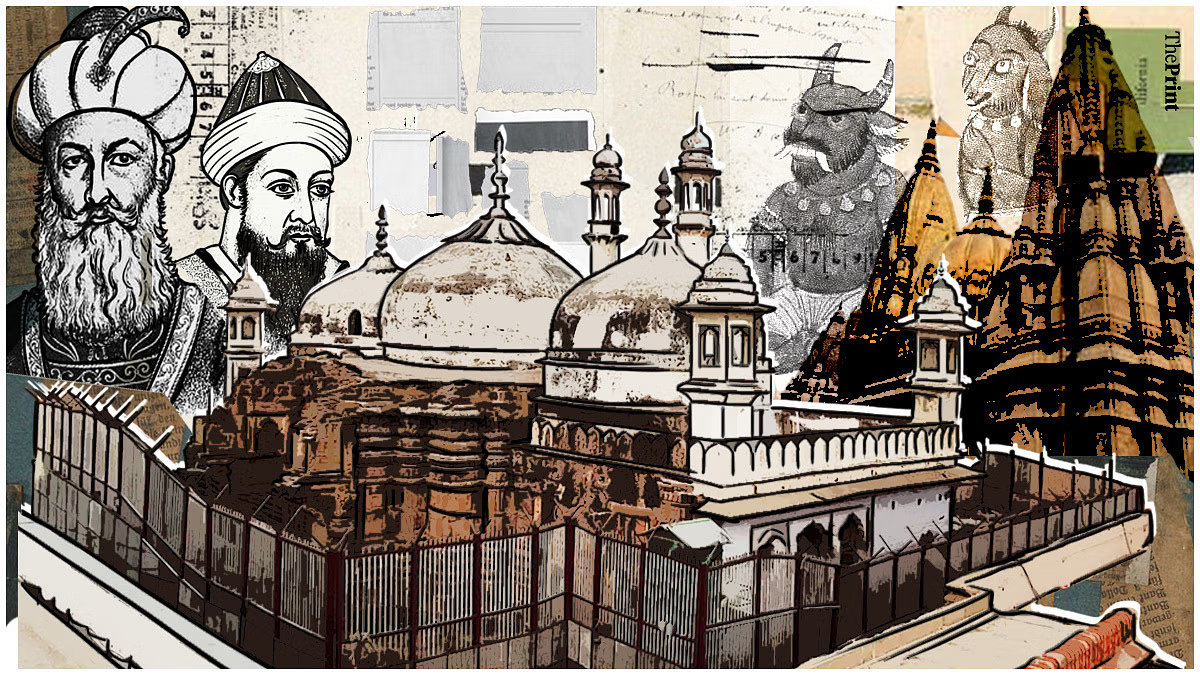News: The dispute over Varanasi, Mathura mosques.
Claim in the case of Varanasi: The main basis for the suits is that the Hindu side says that an old temple of Lord Vishweshwar lies at the centre of the Gyanvapi compound. The site, they contend, is the abode of the ‘self manifested’ deity since time immemorial. They claim that the temple was demolished on the order of Emperor Aurangzeb in 1669.
Claim in the case of Mathura: The suits in Mathura pertain to the Shahi Idgah mosque that stands adjacent to the Krishna Janmabhoomi Temple there. These suits claim that the mosque was built over the birthplace of Lord Krishna. The mosque committee, however, denies the allegation.
The Places of Worship Act of 1991
In September 1991, the P.V. Narasimha Rao government enacted a special law to freeze the status of places of worship as they were on August 15, 1947.
Provisions:
- It explicitly puts a bar on the conversion of places of worship.
- The religious character of a place of worship existing on August 15, 1947 shall continue to be the same as it existed on that day.
Exceptions:
- The 1991 Act will not apply to ancient and historical monuments and archaeological sites and remains that are covered by the Ancient Monuments and Archaeological Sites and Remains Act, 1958.
- It will also not apply to any suit that has been finally settled or disposed of, any dispute that has been settled by the parties before the 1991 Act came into force, or to the conversion of any place that took place by acquiescence.
Disputes:
- An advocate from the Hindu side has claimed that a ‘Shivling’ (Self-manifested) was found inside a reservoir on the mosque complex during the survey. The Muslim side, however, dismissed the claim and said it was only a ‘fountain’.
- The All India Muslim Personal Law Board (AIMPLB) has termed the court order for videography as a ‘clear violation of The Places of Worship Act, 1991.
Allahabad HC’s clarity over not violating the 1991 Act:
- In the Gyanvapi worshippers’ case, the ruling is that the suits aimed to assert the right of worship of the Hindu deities and did not seek to convert the status of the mosque. The Allahabad High Court has taken the view that the Act does not define the term ‘religious character’.
- A structure cannot have the dual character of being both Hindu and Muslim, and that only an examination of evidence can determine its religious character. The Act cannot be an absolute bar on proceedings to ascertain its religious character, it held.
- Regarding the Mathura dispute, the district court has taken the view that the suits are not barred by the Places of Worship Act, as what is under challenge is the compromise decree based on the 1968 agreement. As the decree was drawn up before the commencement of the 1991 Act, it is not applicable to the case, it has held.
Way forward:
- Legal Adjudication: There is a need to continue the legal process and adjudicate the matter based on historical evidence, archaeological findings, and legal principles.
- Historical and Archaeological Research: Encourage unbiased research to shed light on the disputed site’s historical context, which can contribute to a more informed and evidence-based resolution.
- Mediation and Dialogue: A mediated dialogue involving representatives from both Hindu and Muslim communities can provide a platform for open communication, understanding, and negotiation.
- Political Neutrality: Encourage political leaders and parties to take a neutral stance on the issue and avoid politicizing the dispute.
- Implementation of the Resolution: When the resolution is reached, ensure its effective implementation with the involvement of relevant stakeholders.
Following the unity prescribed in most of the scriptures of history will be healthy for a society as heterogeneous like in India rather than digging up for history; for that peaceful coexistence can be a middle path which emphasizes the importance of peaceful coexistence between different religious communities and foster understanding, tolerance, and respect for diversity.
Do you think religious interpretation of history is posing a threat to the secular nature of our State? Discuss with recent examples.

